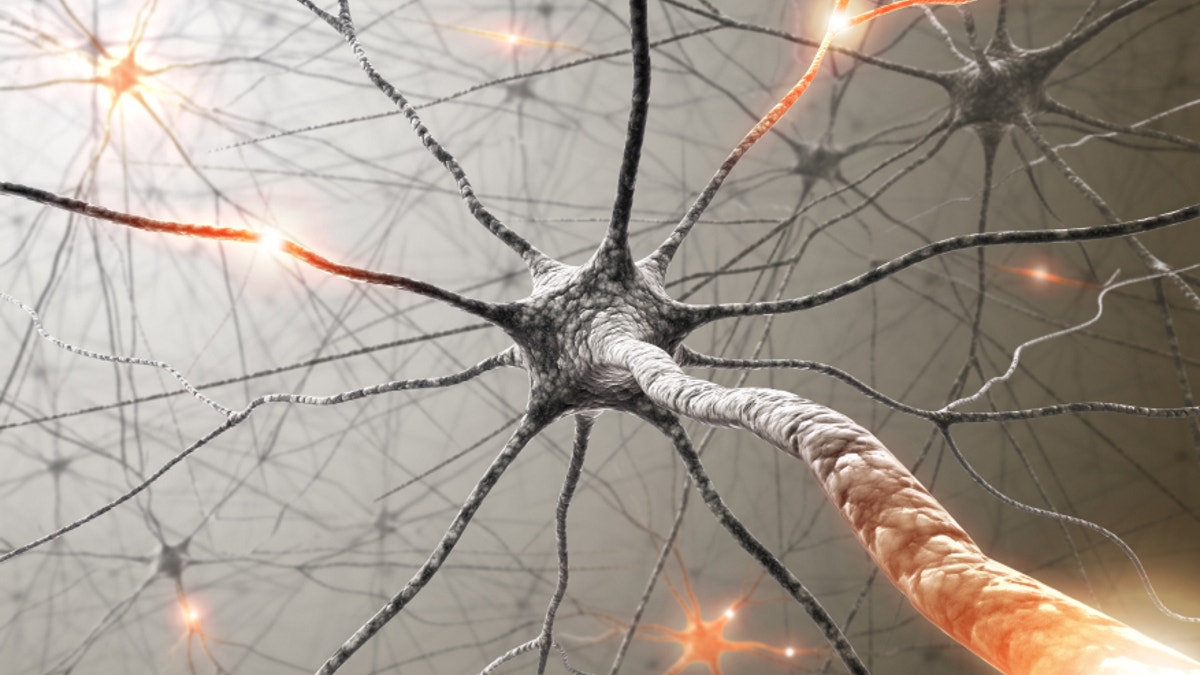
For the first time ever, Stanford scientists have pinpointed a precise spot in the brain responsible for recognition of numerical symbols – such as “6” or “38.”
The cluster of neurons, measuring only one-fifth of an inch wide, activates when a person observes the symbols assigned to a number. Researchers found the area’s activation substantially drops off when a person views the number spelled out (“one” instead of “1) or views a false font (in which the numeral has been altered) – meaning this brain “hot spot” is exclusively responsible for numeral recognition.
This finding could ultimately help scientists understand the complex process at work in the brain when people perform mathematical equations. Further research in this area could also have direct clinical applications, potentially helping those with dyscalculia – a form of numerical dyslexia in which people have difficulty processing numerical information.
The journey to discovering this small but crucial area of the brain began with previous Stanford research on this topic, in which volunteers were observed while performing math equations. Through these studies, scientists were able to collect a large amount of data about areas of the brain that become active when people perform arithmetic problems.
“One of my medical students, Jennifer Shum, discovered that somewhere in the visual system (of the brain), you get unusual activity when patients are doing these calculations,” lead researcher Dr. Josef Parvizi, associate professor of neurology and neurological sciences at Stanford, told FoxNews.com. “Because this activation was in the visual system, it triggered a new series of studies to see why this visual system matters for calculating items.”
The area Shum had identified was located in the inferior temporal gyrus, a superficial region of the outer cortex on the brain. The area has already been known to be involved in the processing of visual information.
To further isolate the spot in this region important for number recognition, Parvizi utilized patients with epilepsy who had been admitted to hospitals for surveillance. Epileptic patients sometimes undergo brain surgery to help relieve their seizures; but first, they must have a section of skull removed so doctors can apply electrodes directly to the surface of their brains. Physicians use these electrodes to monitor patients’ brain activity for a number of days, in order to determine the exact source of their seizures.
This time period also allows for other brain analysis to be done, as the patients are conscious and have nothing to do in the hospital for days – or even weeks – at a time as they wait to experience a seizure.
Parvizi identified seven of these epilepsy patients who had electrodes planted near their inferior temporal gyrus. In the first series of tests, Parvizi showed the patients different numerals and letters on a laptop computer screen – including some false fonts of number and letter components. A second series of tests had the patients observe numerals along with their spelled-out versions.
The activation only occurred when the patients observed the numeral versions and dropped off when observing letters, false fonts and spelled-out versions of the numbers. Even though every person’s brain is shaped differently, each patient experienced activation in the exact same areas of the brain – a cluster of one to two million nerve cells in the inferior temporal gyrus.
“This is very interesting because this is a group of neurons that is responding to symbols we learn through education,” Parvizi said. “Our brain didn’t come ready made to read numbers, we only learn to read them at school. You train your brain, and I train my brain, and at the end we end up with the same area of the brain that does the reading of numerals.”
Not only was the location of the numeral brain spot consistent from person to person, it was also located to a very similar group of neurons in the brain.
“This group of neurons is located side-by-side and very close to the area we use to read words,” Parvizi said. “This area of the brain is called the ‘word-form area.’ So these areas are adjacent but not identical. Your brain reads words and numbers with different groups of neurons.”
Parvizi hopes to expand on this research, potentially using this area of the brain to better explain why some people have problems processing numbers – or perhaps why some are better at math than others.
“In order to do math, you need to be good at recognizing numbers,” Parvizi said. “What this finding tells us is where mathematical cognition starts from. Can we find the first node in this network – where numbers are recognized – and then processed further for mathematical calculation? This is a clear example of mapping the human brain.”
The research was published April 17 in the Journal of Neuroscience.
